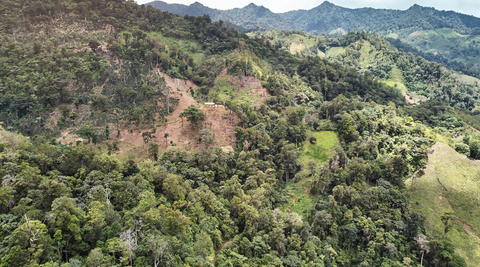
Introduction: Altitude plays a significant role in the cultivation of coffee, influencing not only the growth of the beans but also the resulting flavor profiles. In this blog post, we explore the fascinating relationship between altitude, coffee roasting, and the unique flavors that emerge from beans grown at different elevations.
Understanding Altitude's Influence: Altitude affects coffee cultivation in multiple ways, including temperature, sunlight intensity, and oxygen levels. These factors impact the physiology of the coffee plant, leading to variations in flavor development and bean density. As coffee roasters, it is essential to grasp the nuances brought about by altitude to roast beans to their fullest potential.
Flavor Profiles at Different Altitudes:
-
Low Altitude (up to 2,000 feet): Coffee grown at lower elevations tends to have a milder flavor profile with lower acidity and less complexity. The beans often exhibit nutty or chocolatey notes and a smooth mouthfeel. While they may lack the vibrancy of higher-altitude coffees, they offer a comforting and balanced cup.
-
Medium Altitude (2,000 to 4,000 feet): Coffee cultivated at medium altitudes strikes a balance between brightness and body. The beans tend to have moderate acidity, a diverse flavor spectrum, and pleasant sweetness. This range often produces versatile coffees that appeal to a wide range of palates.
-
High Altitude (4,000 to 6,000 feet): At higher altitudes, coffee plants endure cooler temperatures, which slow down the maturation process. This leads to concentrated flavors, increased acidity, and greater complexity. High-altitude coffees often exhibit vibrant floral, fruity, and wine-like characteristics, with a clean and crisp finish.
-
Very High Altitude (above 6,000 feet): The extreme conditions at very high altitudes result in exceptional coffees. These beans often boast extraordinary acidity, pronounced fruity flavors, and intense aromatics. The high elevation imparts a unique character to the coffee, showcasing the terroir and meticulous attention to detail in cultivation.
Roasting Considerations: When roasting coffee from different altitudes, it is crucial to adapt the process to highlight the specific characteristics of each bean. Factors such as density, moisture content, and sugar development may differ, requiring adjustments in roasting parameters. Roasters carefully evaluate each coffee's origin and altitude to determine the roast profile that will best express its inherent qualities.
Appreciating Altitude's Impact: As coffee enthusiasts, understanding the impact of altitude on flavor profiles allows us to appreciate the diversity and complexity found within the world of coffee. By exploring single-origin coffees and their altitudes, we embark on a sensory journey that takes us from lush lowlands to lofty peaks, experiencing a multitude of flavors and discovering the unique stories behind each cup.
Conclusion: Altitude significantly influences coffee roasting and the flavors that emerge from the beans. From the milder, comforting profiles of low-altitude coffees to the vibrant and complex characteristics of high-altitude beans, every elevation range offers a distinct taste experience. By recognizing the impact of altitude, coffee roasters can unlock the full potential of each coffee, showcasing the diversity and beauty that nature and terroir bring to our daily cup. So, next time you enjoy a delicious brew, remember to appreciate the altitude's role in creating that extraordinary flavor journey.





